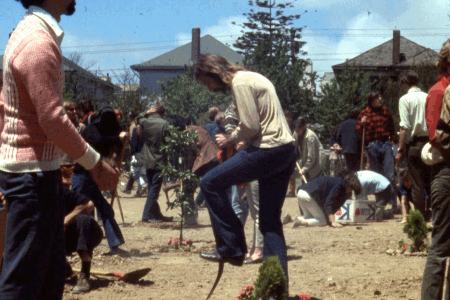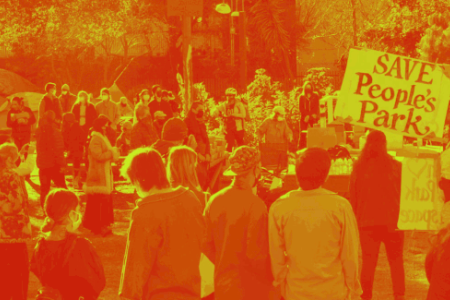Learn
Don’t get sold out! Find out about People’s Park for yourself.
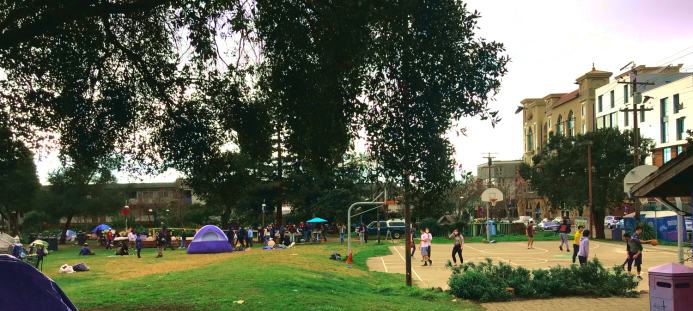
People’s Park was constructed without permission in 1969 to create a beautiful community on vacant UC land. Protests about the Vietnam war and civil rights were against the system — the park represented a new chapter of resistance in which people began to build a new world worth living in.
UC’s first attempt to seize back and destroy the park led to rioting, police shootings that left bystander James Rector dead and dozens wounded, and a week-long National Guard occupation of Berkeley. UC has always claimed to own the land on Dwight Way east of Telegraph, but since 1969 they have never been able to control it. Over the years, park users have practiced “user development” by building and tending gardens, trees and landscaping as determined by users, not government managers. It is a rare place in the city open to everyone, hosting a free speech stage and daily free food servings.
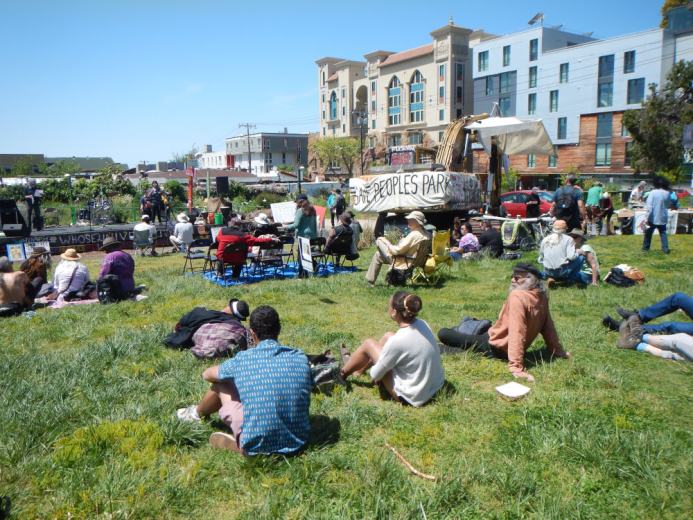
The issues connected to the Park are vital — people seek freedom to use and enjoy land, not just hold it for profit and greed. We demand direct involvement in creating the world and deciding how things should work in our community because these processes bring meaning to our lives. UC’s bureaucratic and dehumanizing management treats people and neighborhoods like computer circuits waiting to be programmed.
[continued below]
An unspoken justification for UC’s dorm is to displace homeless people who hang out at the Park — but it is a paradox, because these days there are homeless encampments on every corner so no one can seriously believe that destroying the Park could “fix” homelessness. UC has done everything it could to push homeless people to the Park, bias its students against the homeless by conflating poverty with crime, and try to make the park a festering eyesore by tearing out trees, the children’s playground, freeboxes, gardens and other improvements constructed by Park users. It made its own bathroom inhospitable and prison-like with no soap or hot water (even during the pandemic). In 2018 on the verge of the 50th anniversary, UC cut down 42 trees without warning or consideration.
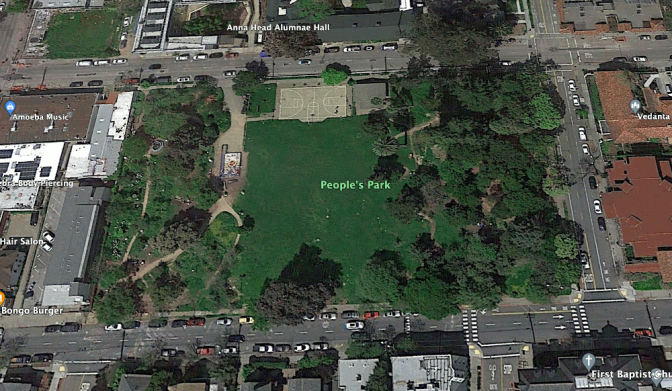
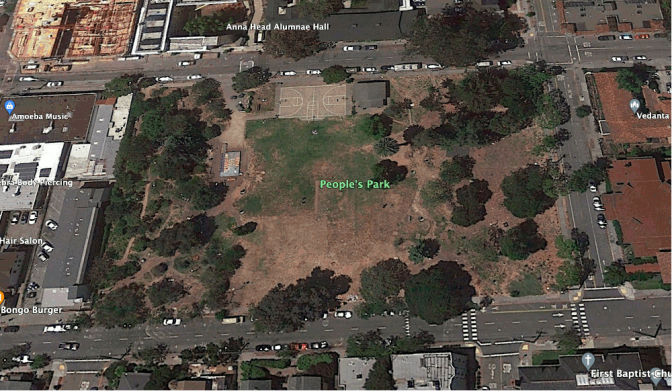
After decades of UC policy to undermine the Park, they now want to take credit for “cleaning up.” But the real mess is capitalism and a system that builds palaces for the few and leaves so many people out in the cold. UC claims the land is theirs and treats the park users and residents the way they treat the trees — disposable, worthless, unprofitable.

As the capitalist housing crisis has worsened, pushing the poor and people of color further to the margins of Berkeley, the park has become an essential refuge and cultural center. It’s time to organize and share the knowledge between the generations, the resources between the housed students and the unhoused, to plan the defense of the park from UC’s colonial entitlement, and grow something together in a different way.
Contrary to what UC likes to say, the park is an essential and vibrant place today, not just history to get memorialized in a plaque.
- text adapted from Slingshot

